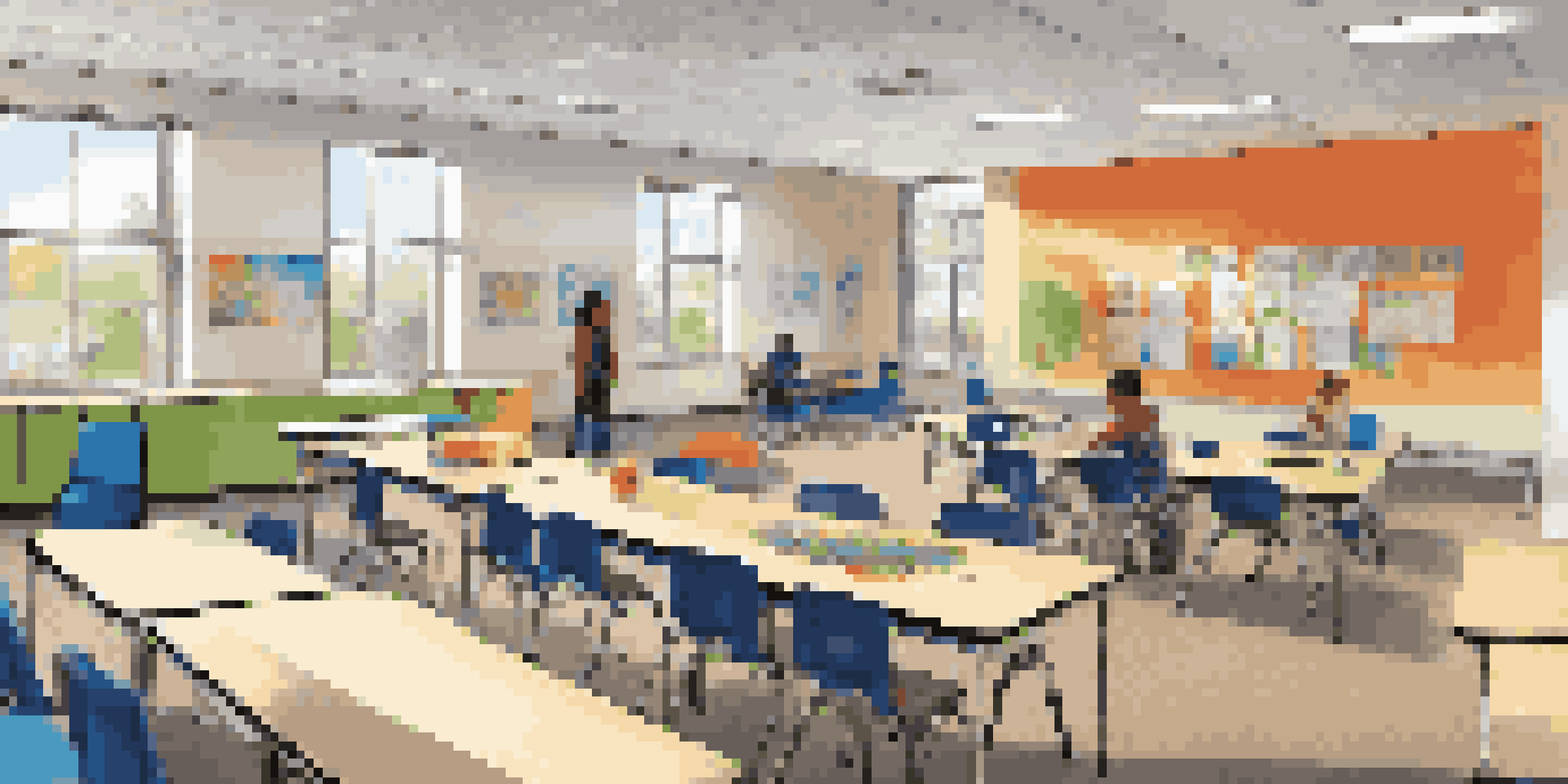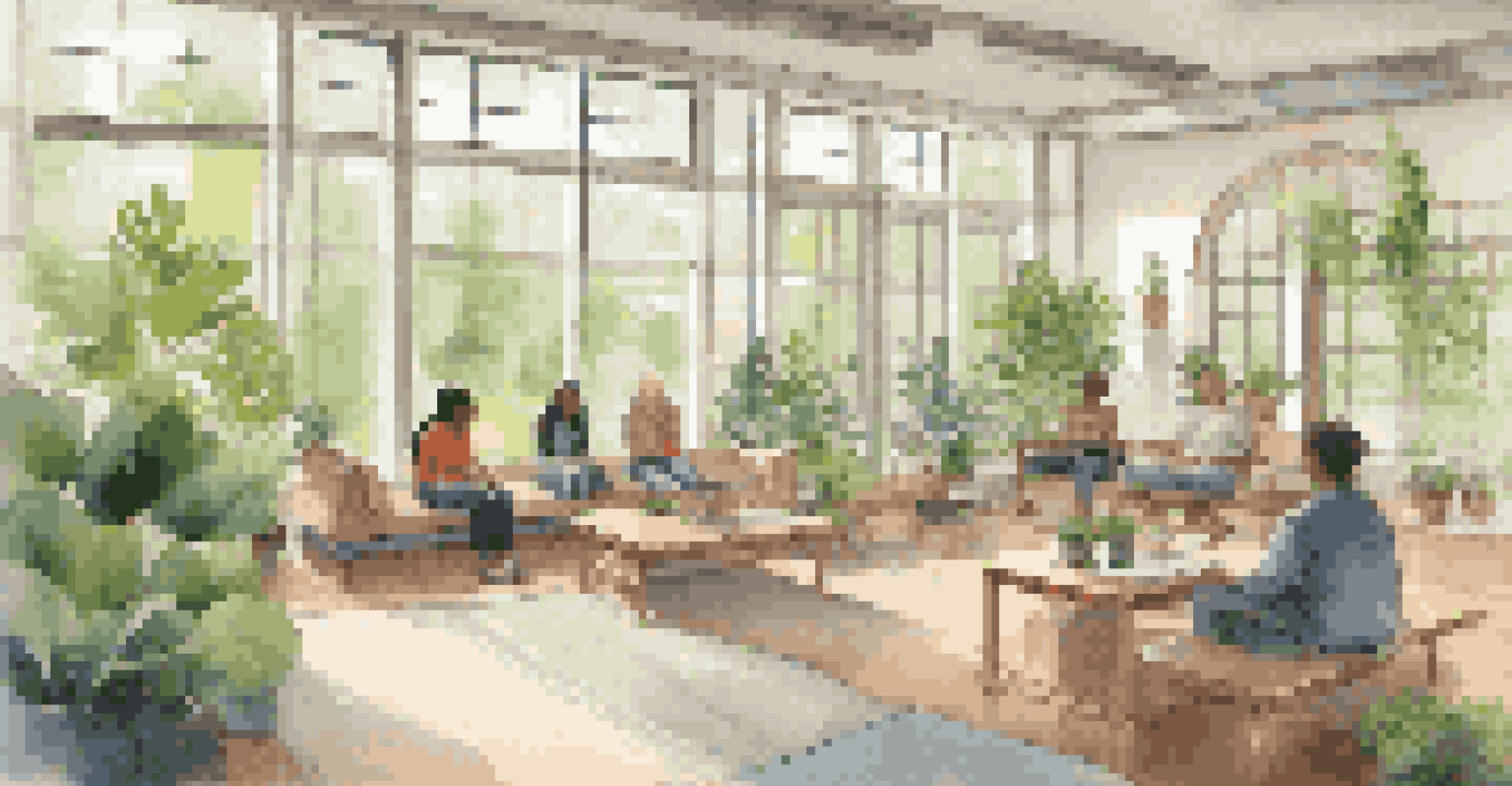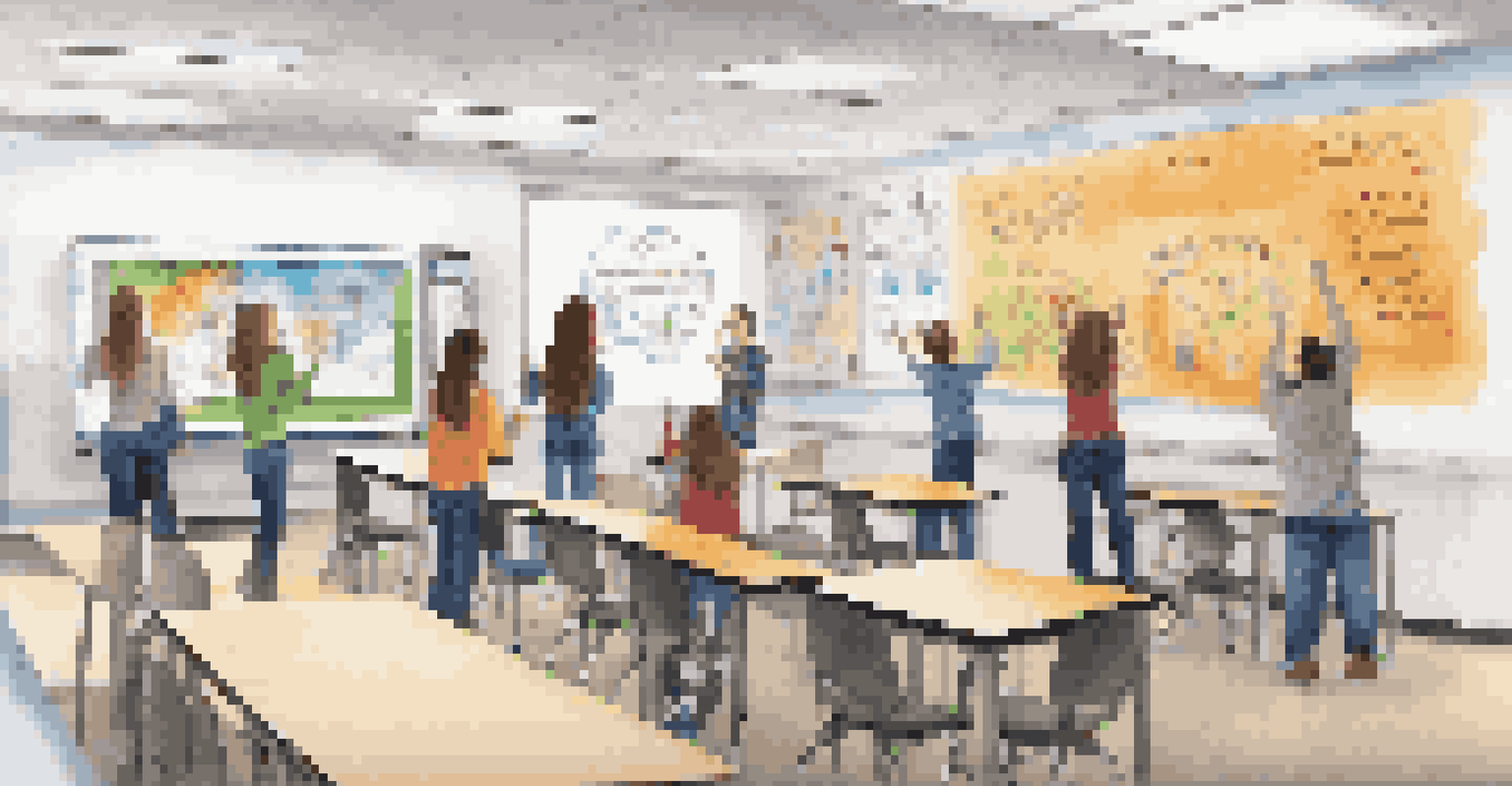Creating Engaging Learning Environments: Key Considerations

Understanding the Importance of Learning Environments
Learning environments play a crucial role in shaping student experiences and outcomes. A well-designed space can stimulate curiosity and promote engagement, making learning feel less like a chore and more like an adventure. Think of it as setting the stage for a performance; if the environment is dull or uninspiring, even the best actors can struggle to connect with their audience.
The environment is the most important thing in learning. It can inspire students to learn or discourage them from learning.
Consider how an artist uses colors and textures to evoke emotions; similarly, educators can create spaces that inspire creativity and collaboration. When students feel comfortable and engaged, they are more likely to participate actively, leading to deeper understanding and retention of information. This is especially important in today's diverse classrooms, where students come from various backgrounds and learning styles.
Ultimately, creating an engaging learning environment is about recognizing that every student is unique. By prioritizing the physical and emotional aspects of the space, educators can foster an atmosphere that encourages exploration and personal growth, making learning a truly enriching experience.
Designing Flexible Learning Spaces for Diverse Needs
Flexibility in design is key when creating learning environments that cater to diverse needs. Imagine a classroom that can transform from a lecture hall to a collaborative workspace; this adaptability can enhance student engagement significantly. By incorporating movable furniture and modular layouts, educators can create spaces that accommodate various teaching styles and learning activities.

Additionally, consider the different ways students learn. Some thrive in quiet, solitary spaces, while others flourish in dynamic, group-oriented settings. By providing a variety of spaces—like quiet corners, group tables, and open areas—educators can support different learning preferences and encourage students to take ownership of their learning journey.
Engaging Spaces Boost Learning
Well-designed learning environments stimulate curiosity and promote active participation, leading to deeper understanding.
Ultimately, a flexible learning environment promotes inclusivity and caters to the unique strengths of each student. This approach not only enhances engagement but also fosters a sense of belonging, making every student feel valued and understood in their learning process.
Incorporating Technology for Enhanced Engagement
In our digital age, technology plays an integral role in creating engaging learning environments. Tools like interactive whiteboards, tablets, and educational apps can enhance the learning experience by providing instant access to information and resources. Imagine being able to explore a virtual museum or conduct a science experiment through a simulation—these experiences can captivate students' imaginations and make learning more dynamic.
Education is not the filling of a pail, but the lighting of a fire.
However, it’s essential to use technology thoughtfully, ensuring it complements the learning objectives rather than distracting from them. Educators should focus on integrating tools that promote collaboration and critical thinking, rather than simply relying on tech for tech's sake. For instance, using platforms that facilitate group projects can foster teamwork and communication skills, crucial for success in the real world.
By thoughtfully incorporating technology, educators can create an engaging environment that resonates with today’s learners. This not only enhances the educational experience but also prepares students for a future where technology will be an indispensable part of their lives.
Creating a Sense of Community in Learning Spaces
Building a sense of community within learning environments is vital for fostering engagement and collaboration. When students feel connected to their peers and instructors, they are more likely to participate actively and support one another. Think of a close-knit team where every member contributes their strengths; this synergy can lead to richer learning experiences.
Encouraging group activities, discussions, and peer feedback can help cultivate this sense of belonging. Simple practices like greeting students at the door or incorporating icebreaker activities can break down barriers and promote a positive classroom culture. This environment of trust and respect allows students to express themselves freely, leading to meaningful interactions and deeper learning.
Flexibility Supports Diverse Needs
Creating adaptable learning spaces accommodates various teaching styles and learning preferences, enhancing student engagement.
Ultimately, a strong sense of community transforms the learning space into a safe haven where students can thrive. When learners feel they are part of something bigger, they are more motivated to engage, take risks, and explore new ideas, making the learning experience more impactful.
Fostering Creativity Through Design Elements
Creativity is a powerful driver of engagement, and the design of learning environments can significantly influence it. By incorporating elements that inspire creativity—such as vibrant colors, artwork, and comfortable seating—educators can create an atmosphere that encourages students to think outside the box. Imagine walking into a room filled with inspiring quotes and student artwork; it can ignite enthusiasm and innovation.
In addition to aesthetics, providing resources like art supplies, building materials, and technology can further enhance creative expression. Spaces that allow for experimentation and exploration enable students to engage with the material in unique ways, fostering critical thinking and problem-solving skills. For instance, a science lab equipped with hands-on tools can spark curiosity and drive inquiry.
Ultimately, fostering creativity in learning environments not only enhances engagement but also prepares students for a future where innovation is key. By encouraging students to explore their ideas and express themselves creatively, educators can cultivate a generation of thinkers and doers who are ready to tackle the challenges of tomorrow.
Implementing Feedback Mechanisms for Continuous Improvement
Feedback is a crucial component of any engaging learning environment, providing insights into what works and what needs adjustment. By implementing regular feedback mechanisms, educators can adapt their approaches to better meet the needs of their students. Think of feedback as the compass guiding you through a journey; it helps ensure that you stay on the right path toward achieving your goals.
Encouraging students to share their thoughts on the learning environment can lead to valuable insights. This can be done through surveys, suggestion boxes, or open discussions. When students feel their voices are heard, they are more likely to take ownership of their learning experience and contribute positively to the environment.
Well-Being Enhances Learning
Mindful design choices that prioritize well-being create a supportive atmosphere, helping students thrive both academically and emotionally.
Ultimately, continuous improvement driven by feedback ensures that learning spaces remain relevant and effective. By being open to change and responsive to student needs, educators can create vibrant environments that engage and inspire learners, fostering a culture of growth and development.
Promoting Well-Being Through Mindful Design Choices
Well-being is a cornerstone of effective learning environments, and mindful design choices can significantly impact students' mental and emotional health. Incorporating elements like natural light, plants, and comfortable seating can create a soothing atmosphere that promotes focus and reduces stress. Imagine the difference between studying in a bright, airy room versus a cramped, dim space; the former can uplift spirits and enhance concentration.
Additionally, creating areas designated for relaxation or mindfulness can encourage students to take breaks and recharge. Simple practices like incorporating quiet zones or offering guided meditation sessions can help students manage stress and anxiety. When students feel supported in their well-being, they are more likely to engage fully in their learning.

Ultimately, promoting well-being through design fosters an environment where students can thrive academically and emotionally. By prioritizing health and happiness in learning spaces, educators can cultivate resilience and motivation, paving the way for lifelong learners.